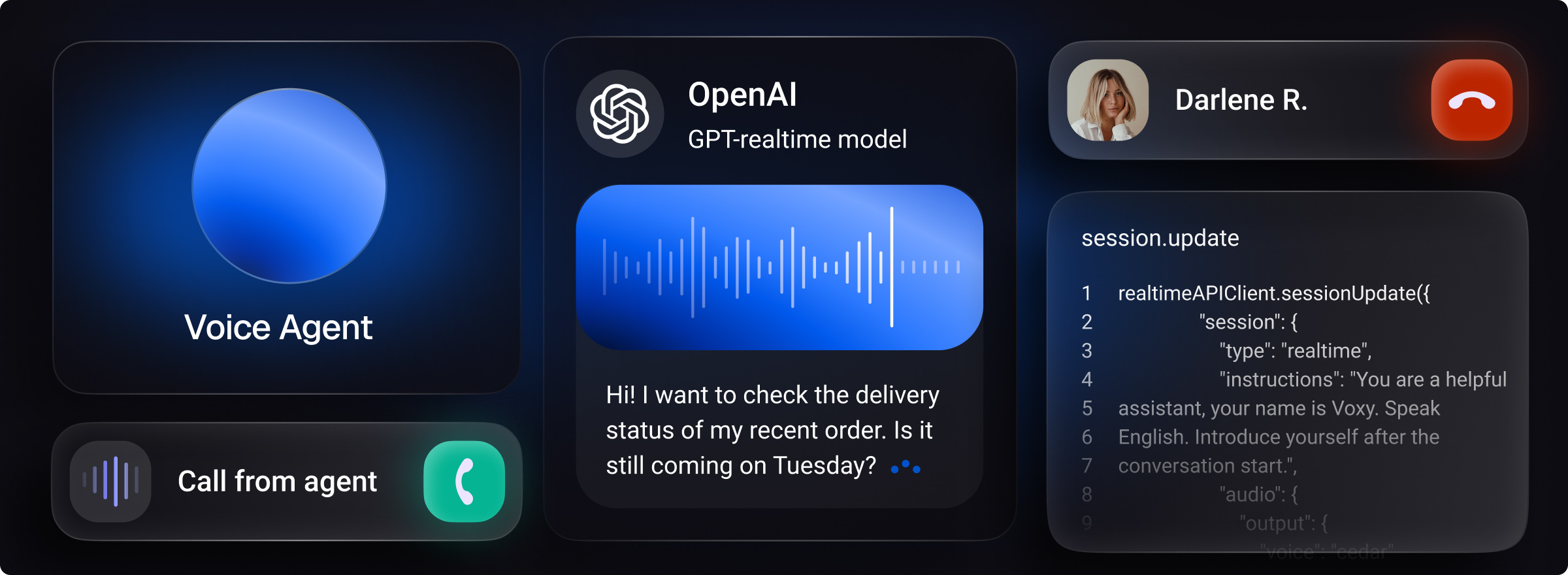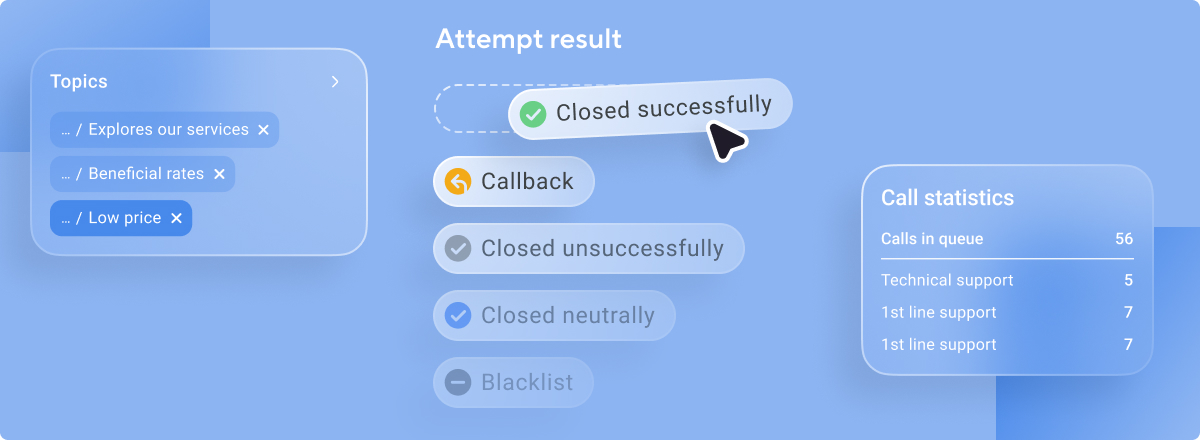Voximplant serverless architecture provides a simpler alternative to deploying traditional VoIP servers in a datacenter. Voximplant APIs offer developers scale and on-demand communications services. Learn how easily you can create VoIP services in the form of Voximplant-based apps.
A VoIP server is a general term for any server that handles VoIP communication sessions, including SIP signaling servers and media servers. A VoIP server could be an IP PBX, ACD, IVR, auto dialer or other types of VoIP infrastructure.
Developers usually deploy VoIP servers in an enterprise data center. When you manage your own server infrastructure, you always need to worry about maintaining operating systems, provisioning adequate server and storage capacity, and other ways to securely and reliably deliver VoIP apps.
Deploying VoIP servers is just the beginning of the project. You also need to:
- Choose a telecom operator and set up a SIP trunking connection
- Then, you choose a backend and deploy an additional server infrastructure
- And only after that, you decide where and how to implement the business logic. You deploy the business logic, set up service monitoring, and check that everything doesn’t crash in the process
Rolling out an IP PBX following this process could take more than six months.
Step Away From Data Centers
A serverless CPaaS architecture provides a flexible and scalable cloud infrastructure to host your app. The cloud provider hosts your app and manages server-side logic and app state. Developers focus on business logic and individual app functions.
The Voximplant CPaaS offers APIs developers can use to build a range of VoIP server types. You can use these APIs to create cloud-based apps that replace traditional phone services.
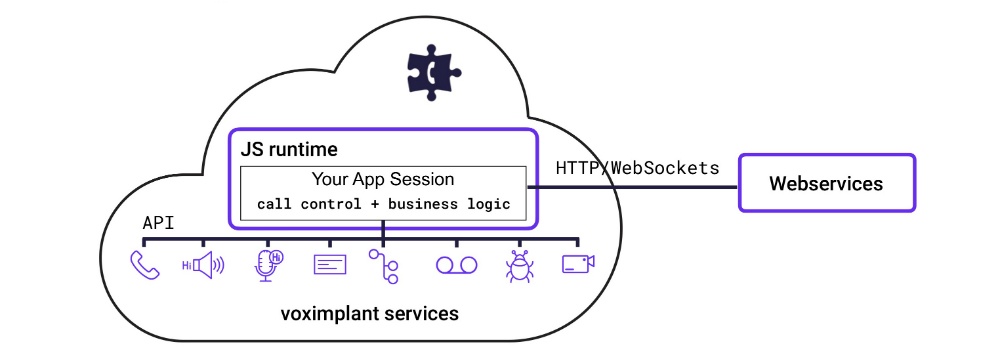
Set Up an IP PBX in 10 Minutes
An IP PBX is a business telephone system. Any VoIP call first communicates with your IP PBX. After receiving the phone call, the IP PBX identifies the destination and routes it further. This applies to either an internal call to a colleague or external to the Public Switched Telephone Network (PSTN).
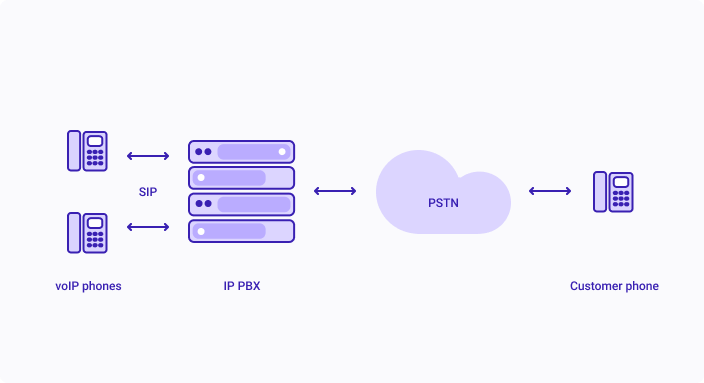
With the Voximplant serverless CPaaS, you can set up your basic IP PBX in about ten minutes. Here’s a rough and ready guide:
- Create an account. Sign up and activate a free developer account
- Create a Voximplant app and users. When creating users, you can choose whether they will have a separate or general account balance
- Create a JS scenario. Build three scenario types for inbound, outbound and inter-user calls: PBX in, PBX out and PBX local, respectively
Handle Contact Centers with Large VoIP Call Volumes
Contact center agents connect their VoIP phones to an IP PBX or an ACD and make calls over the SIP protocol. ACD stands for Automatic Call Distributor and helps businesses to organize inbound VoIP traffic. Modern inbound contact centers prefer to deploy an ACD instead of an IP PBX.
While an agent speaks with a caller, other customers wait in a queue. Once the agent is free, the ACD connects the next caller in the queue. To help prevent customers from abandoning the queue, a synthesized voice message informs them about the remaining waiting time.
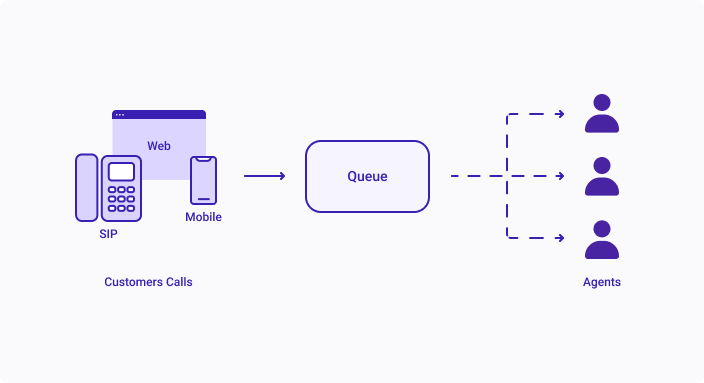
Without an ACD, the number of customers you can serve with a given number of agents decreases. Your contact center can serve at once only as many customers as you have agents. By adding an ACD, you get an additional layer of scalability for your VoIP phone system.
Voximplant’s ACD solution provides developers with the following features:
- Smart queues. Automatically put callers in queues sorted by agent expertise, time zone, or language preference via VoxEngine scenarios
- IVR integration. Notify callers in queues about their position and/or estimated waiting time with a conversational IVR
- ACD module. Track statuses and forward calls to agents as soon as they become free using a dedicated VoxEngine module
Improve Your ACD with IVR
Smart IVR – short for Interactive Voice Response – is a piece of software that automates first-line support. The IVR uses speech recognition and synthesis to automatically respond to basic customer requests.
The IVR also facilitates call routing. Once a call is received, the IVR asks the caller questions and interprets answers entered as keypresses or via voice recognition. If the voice bot can’t help, or the customer needs a specific live agent, it routes calls to the appropriate department.
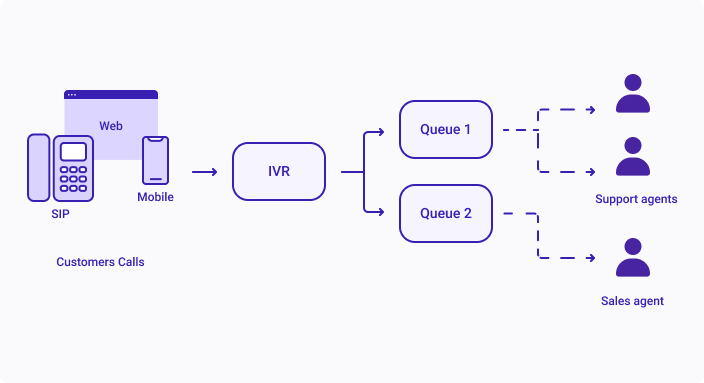
Voximplant’s IVR offers developers useful features such as:
- IVR module. Simplify the process of creating IVR menus. Build faster with less code
- DTMF/voice control. DTMF or speech entry for 40 unique language dialects covering localized needs in more than 30 countries
- Dialogflow Connector. Direct integration with Google’s NLP service that enables advanced voice bot responses
You can set up and deploy Voximplant's IVR solution 5 to 10 times faster than a typical outsourced call center.
PDS: Increase Agent Performance
Standard auto dialers allow outbound call centers to automatically place phone calls. The idea is that the program dials phone numbers and switches the call to a free agent. Auto dialers eliminate the need for agents to place phone calls manually and idle time, waiting for the callee to answer.
Voximplant features an enhanced auto dialer – Predictive Dialing System or PDS. The PDS killer feature is that the program knows how many agents are free, busy and the average call time. PDS uses these metrics to predict the moment when agents will be available to connect with a new callee.
You can initiate outbound calls using JavaScript code. Instead of initiating thousands of outbound calls, we provide a special HTTP API function that takes the name of a scenario and queue as input. Then, the predictive call mechanism dials up the required number of scenarios in parallel until the available agents are fully utilized.
Additional VoIP Server Implementations
- Phone number masking. Add an additional layer of privacy to your communications and prevent misuse of sensitive information
- Call tracking. Track call-down marketing campaigns and monitor valuable data to improve your business conversations
- Video conferencing. Conduct remote meetings with your colleagues. Broadcast video calls to viewers on popular platforms such as YouTube and Twitch
See the full list of Voximplant’s VoIP systems here.



